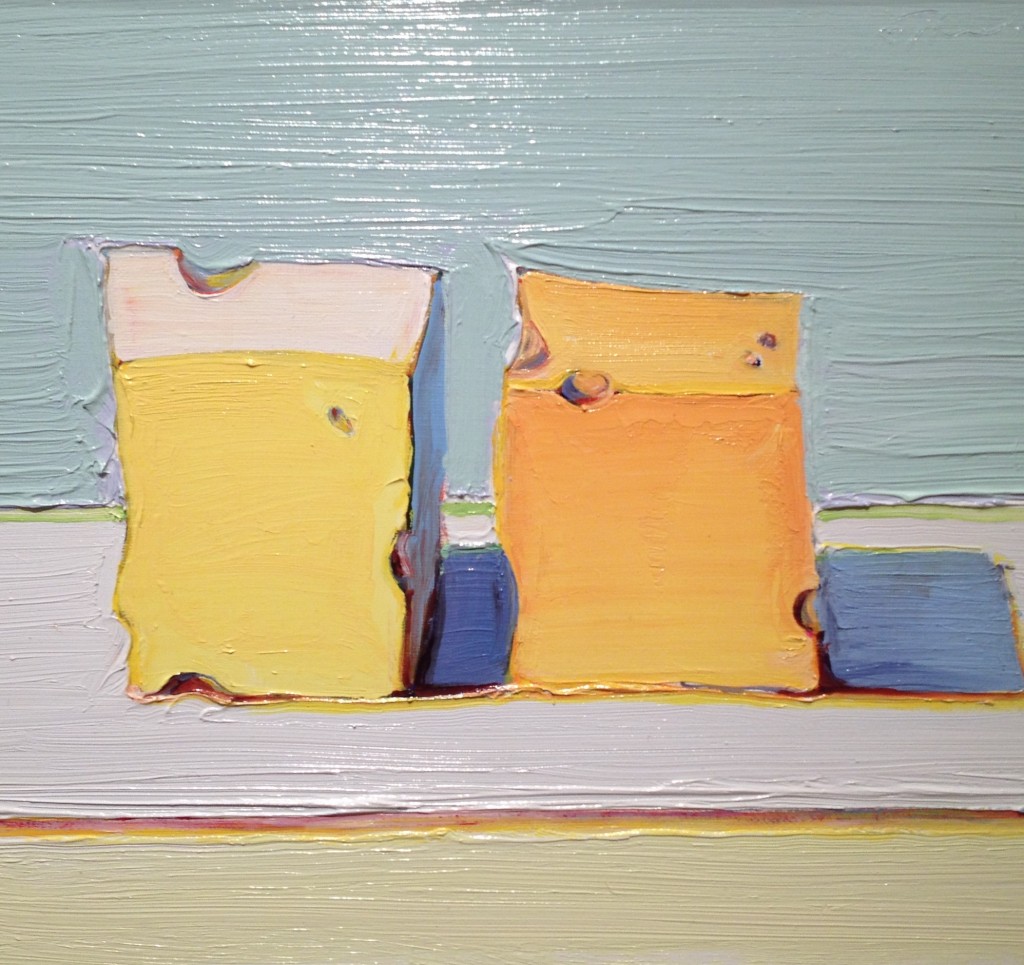Long looking
I saw comparatively few exhibits over the past year, but I did manage to catch Wayne Thiebaud at Aquavella, where we lingered quite a while in front of his work. It appeared to be a selection from throughout his career, though I’d hoped for more of the recent large non-urban landscapes. It did have at least one smaller work in that mode: a luminous view of a shoreline with a file of beachcombers, who appeared, on closer inspection, to be armed with metal detectors. It’s no shock that Thiebaud is whimsical enough to turn a potentially grubby-looking subject into something gorgeous. The show in general was as energizing as I’d hoped it would be, and it offered some interesting surprises including a small self-portrait in graphite, a pencil sketch that captured his young likeness with great economy despite the paper’s dimensional constraints. You could discern the slightly pensive good cheer behind his eyes even at that small scale. His handling of paint varied in surprising ways even within individual paintings. He trowels the paint onto a surface in his backgrounds and in uniform areas of color, but when it comes to rendering the human body, the paint becomes smooth and less visible, as if it’s been rubbed smooth from so much polishing. So he’ll show you a figure where the background might be so thick it looks as if he was able to drag a fingertip around the edge of his sitter’s figure, almost as if to indicate a saintly aura, but then the arms are so carefully finished the paint disappears into the illusion it creates. My favorite: a brilliant little painting of two blocks of cheese, as minimal as a Stella, but filled with the light that Thiebaud owns. Simple or not, he can work on a painting for years.
He extolled the value of “long looking” in an interview with Art News about Morandi’s influence on his work, and I wholeheartedly concur with every word: “There are such good lessons to learn from looking at his work. They have to do with certain propositions that I think serious painters need to be aware of. One of them, I think, is the wonder of intimacy and the love of long looking. Of staring but at the same time moving the eye, finding out what’s really there, and there are so many things that are subtle and may look like something at one moment but not the next. There’s always that kind of “not quite” with Morandi and yet the feeling of totality is so nicely complete. It’s always a joy to look at his work.”
Aquavella is one of the nicest art spaces I’ve visited in New York City, a former residence, not nearly as spread out as the former garages in Chelsea, but with very high ceilings, including one room with rows of sculpted busts sitting far up in a recessed alcove that runs along the wall just beneath the crown molding. It’s a phalanx of likenesses of luminaries from the Enlightenment. I recognized Voltaire and hazarded some guesses about many of the others.

Comments are currently closed.